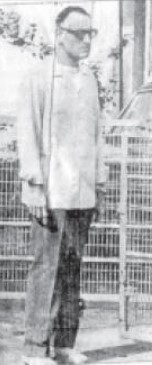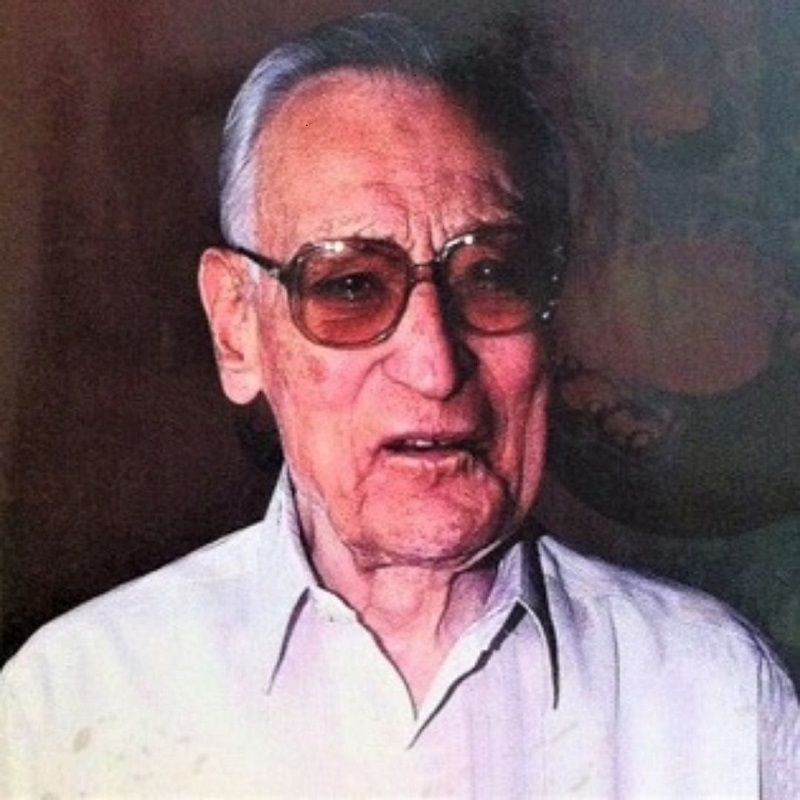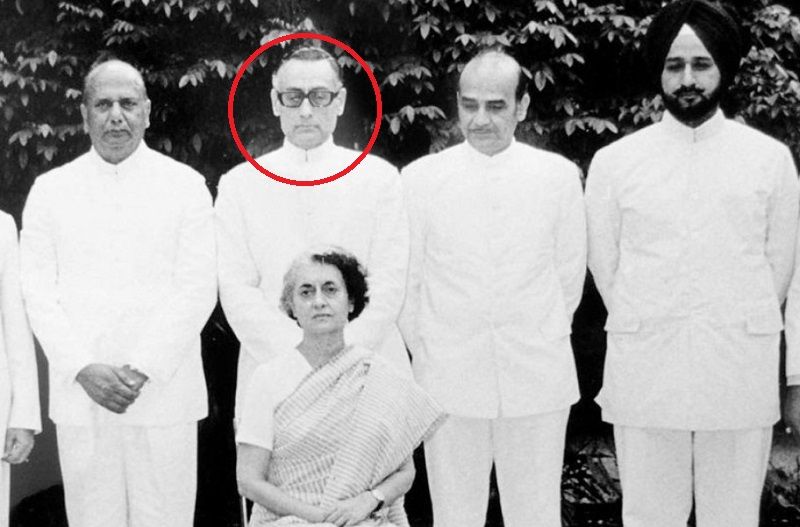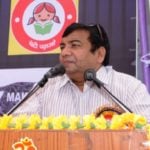Rameshwar Nath Kao Age, Death, Wife, Children, Family, Biography & More
| Bio/Wiki | |
|---|---|
| Nickname | Ramji [1]ANI |
| Profession | Spymaster |
| Known for | Being the first chief of India's external intelligence agency, the Research and Analysis Wing |
| Physical Stats & More | |
| Eye Colour | Black |
| Hair Colour | Grey |
| Career | |
| Founder of | • Aviation Research Centre (ARC) • Joint Intelligence Committee |
| Personal Life | |
| Date of Birth | 10 May 1918 (Friday) |
| Birthplace | Varanasi, British India |
| Date of Death | 20 January 2002 |
| Place of Death | New Delhi |
| Age (at the time of death) | 83 Years |
| Death Cause | Age-related disease [2]The Times of India |
| Zodiac sign | Taurus |
| Nationality | Indian |
| Hometown | Varanasi, British India |
| College/University | • Lucknow University • Allahabad University |
| Educational Qualification(s) | • Bachelor of Arts at Lucknow University • Master of Arts in English Literature at Allahabad University [3]The Better India |
| Caste | Kashmiri Hindu Pandit [4]ANI |
| Relationships & More | |
| Marital Status (at the time of death) | Married |
| Marriage Date | Year, 1941 |
| Family | |
| Wife/Spouse | Malini Kao |
| Children | Daughter- Achala Kaul |
| Parents | Father- Dwarika Nath (deputy collector) Mother- Khemwati Kaul |
| Siblings | Brother- Shyam Sunder Nath |

Some Lesser Known Facts About Rameshwar Nath Kao
- Rameshwar Nath Kao was an Indian spy who was among India’s prominent intelligence officers and helped build India’s external intelligence agency R&AW. He was also known for being the first chief of the Research and Analysis Wing. He also held the Secretary (Research) position in the Cabinet Secretariat of the Government of India. He had also served as the personal security chief to Prime Minister Jawaharlal Nehru and as a security adviser to Prime Minister Rajiv Gandhi. He died on 20 January 2002 due to age-related illnesses.
- When he was a child, his family migrated from Srinagar to Varanasi where he was raised by his uncle Pandit Trilokinath Kao.
- Before becoming a spy, he used to work in a cigarette company.
- In 1940, he joined law classes at Allahabad University but left it because he cleared the Civil services examination and joined the Indian Imperial Police. He took training at the police training college, Moradabad. He was posted as an Assistant Superintendent of Police in Kanpur. Later, he was posted to Khiri, the HQ of Lakhimpur Khiri dist in UP, and various positions in UP.
- On the eve of Independence, he was made in charge of the security of Prime Minister Jawaharlal Nehru.
- In the 1950s, he helped the then-government of the prime minister of Ghana, Kwame Nkrumah to set up an intelligence and security organisation there.
- In 1950, when Queen Elizabeth II visited India, Kao was in charge of her security. At a reception function, Kao caught a bouquet that was thrown towards the Queen because he thought that it could be a bomb.
- Kao was a part of the investigative team that took out a probe against the crash of Kashmir Princess, an aircraft owned by Air India that exploded on 11 April 1955. It carried delegates who were supposed to go to Bandung Conference. In the crash, 16 delegates died and three survived. According to the investigative team, the explosion was caused by the Chinese Nationalist Party, Kuomintang who wanted to assassinate Chinese premier Zhou Enlai, but he was not present on the flight. Later, Kao received a letter of recommendation from Zhou Enlai for his work.
- Kao was made the first director of the Aviation Research Centre at Charbatia, Odisha by Jawaharlal Nehru as he was the head of personal security. The need to make an intelligence organisation for the military came after India suffered from the Sino-Indian War of 1962 and the Operation Gibraltar of 1965.
- In 1968, Prime Minister Indira Gandhi asked the Intelligence Bureau to form the Research and Analysis Wing which would work as India’s primary external intelligence agency. Kao was made the head of the organisation. He was the first Hindu officer to join the IB. Later, he was chosen as the Additional Secretary and secretary (Research) in the Cabinet Secretariat. He spent a decade in the organization and made it a prominent part of India’s security. The decision of keeping faith in Kao taken by Indira Gandhi was highly appreciated by everybody. In the 1960s, Kao used to meet Indira Gandhi frequently because of the problems that began in East Pakistan. In an interview, one of Kao’s associates talked about Kao’s bond with Indira Gandhi and said,
Intelligence is the only government business that depends upon the spoken word. Sometimes you can understand signs and body language. Kao had that rapport with Mrs Gandhi.”
- In 1975, he also suggested merging Sikkim in India as its 22nd state. This suggestion of R&AW was appreciated by the government. According to some reports, he also played a crucial role in arming Tamil guerrillas in the 1980s. He also had active participation in Sri Lankan affairs.
- Kao and his team members Shankaran Nair (former R&AW Director) and Girish Chandra Saxena (former R&AW Director and Jammu and Kashmir Governor), along with a group of Kashmiri advisors D.P. Dhar, P.N. Haksar and T.N. Kaul helped in the creation of Bangladesh. They provided arms and training to the Bangladesh forces who were also known as Mukti Bahini. During the war, it was reported that the Indian Air Force could bomb the room in which the East Pakistan Cabinet was in session. After the formation of Bangladesh, Kao maintained a close relationship with Bangladesh. In 1975, Kao was sent to Dhaka to warn Sheikh Mujibur Rahman of assassination by some of his army members. In the meeting, he revealed the names of the suspected military plotters, but Rahman did not take his advice seriously and after a few weeks he was killed.
- In 1977, he was pointed out for his role in the Emergency by Prime Minister Indira Gandhi who shared closeness with Kao. His tenure during Indira Gandhi’s rule was extended. After the 1977 elections, when the Janata party came to power, Kao was under a lot of pressure of being questioned by the new leaders so, he resigned from his position. He returned in 1980 when Indira made a comeback and worked as a security adviser to both Indira and Rajiv Gandhi. In an interview, he talked about his resignation and said,
Prime Minister Morarji Desai was contemptuous of RAW and he believed that it was just another police force, it was pointless working for an intelligence agency if the PM had no faith in the business.”
- In 1980, he created the National Security Guard (NSG) during the insurgency in Punjab to bring out the needs of the Government of India to remove terrorism within the country.
- In 1989, he started working towards regaining the respect of the Kashmiri Pandits. He used to interact with various political leaders and the Indian government to remind them about the problems in Kashmir.
- Many political leaders including Prime Ministers Jawaharlal Nehru and Indira Gandhi appreciated Kao for being incorruptible, intellectual, shy and humble.
- Kao was named one of the ‘five great intelligence chiefs of the 1970s’ by the head of the French external intelligence agency, Count Alexandre de Marenches. Count talked about him and said,
What a fascinating mix of physical and mental elegance! What accomplishments! What friendships! And, yet so shy of talking about himself, his accomplishments and his friends.”
- He is regarded as a legend by the Indian and South Asian Intelligence communities for making R&AW a successful organization. The people who worked under him were often referred to as Kaoboys. In an interview, the former chairman of the Joint Intelligence Committee K.N. Daruwala talked about Kao and said,
His contacts the world over, particularly in Asia—Afghanistan, Iran, China, you name it—were something else. He could move things with just one phone call. He was a team leader who rode out notorious inter-departmental and inter-service rivalries, which is commonplace in India.”
- To keep up the legacy of Kao who was the founder of R&AW, the organization created the annual R.N. Kao Memorial Lecture. In 2006, the first lecture took place on the fifth anniversary of Kao’s death and was delivered by writer Shashi Tharoor, and the second lecture was given by Kumar Mangalam Birla.
- He was photographed only twice in his entire life because he led a very private life.
- He could speak Urdu fluently and also used to recite couplets in his free time.
- He was passionate about wildlife and kept horse sculptures in his house.
- Once, he was gifted a small bronze statue of a cowboy by George HW Bush when he visited Central Intelligence Agency headquarters in Washington DC. He always used to keep it on his table in the office.
- In 2020, film director, Karan Johar announced that he would make a film based on the book “R.N. Kao: Gentleman Spymaster” written by Nitin Gokhale. He took to Twitter to make the announcement and said,
An adaptation of the book R.N. Kao: Gentleman Spymaster written by Nitin Gokhale, the film will tell the story of Kao who founded India’s external intelligence agency – R&AW and how he went on to become a success story in the world of international espionage.”
- According to many reports, he had taped his life and wanted it to release to the public after his demise. He recorded his life in seven files, out of which four are open for scholars and the remaining three including The 1971 War, Sikkim’s merger with India, and Mrs Indira Gandhi’s assassination supposed to open in 2027.
- In 2020, after Karan Johar made an announcement of making a film on Kao, filmmaker Firoz Nadiadwala also revealed that he planned to make a web series on Kao’s life. In an interview, he said that he began researching Kao’s life in 2015. In the interview, he further added,
We have been working on this project for five years. It’s a story that deserves to be shared and known by everyone, hence we are making it first as a web-series with 20 episodes being planned at the moment. We are in talks with two major streaming platforms for it.”
- According to some reports, his networks were so strong that he knew when Pakistan would attack India. He used to put Indian security on alert so that they would be fully prepared. In an interview, one of his colleagues said that once, he deciphered a code sent from Pakistan, in which they found out that Pakistan had scheduled to attack India, so the Indian Air force was put on high alert, but for two days there was no activity in the country, so his advice was believed to waste, but he asked to keep the air force on high alert for another and on 3 December, there was an attack on the Indian army.
- According to various reports, he was a very private man and was rarely seen in public. He had heavy security in his bungalow in New Delhi and would rarely give interviews.
- In 2022, filmmaker Hansal Mehta announced that he would release a series based on RK Yadav’s book ‘Mission R&AW’ on the SonyLiv app. In an interview, Hansal talked about this and said,
As a storyteller, my endeavour has always been to bring alive stories and explore ordinary people and their extraordinary actions. These are the men who have cemented our political and military history. Rameshwar Nath Kao was known to be a genius, about whom very little is known. I am thrilled to explore his story with the talented Karan Vyas and SonyLIV, who are such terrific partners. I am looking forward to kick-start the project soon.”
References/Sources:









